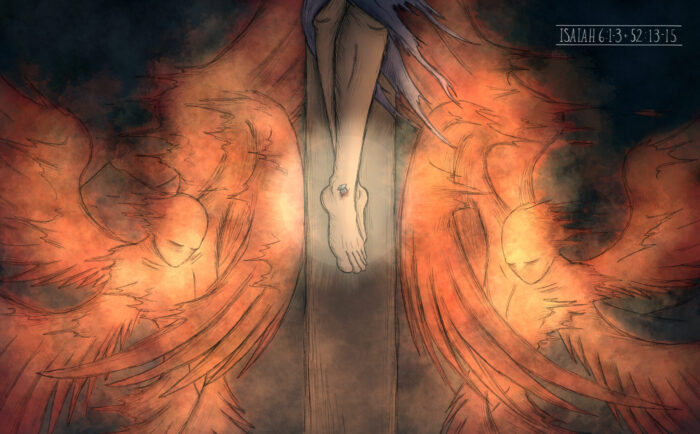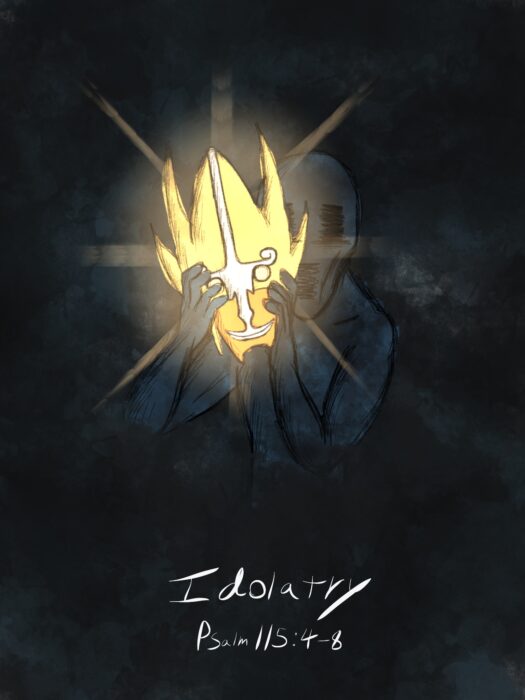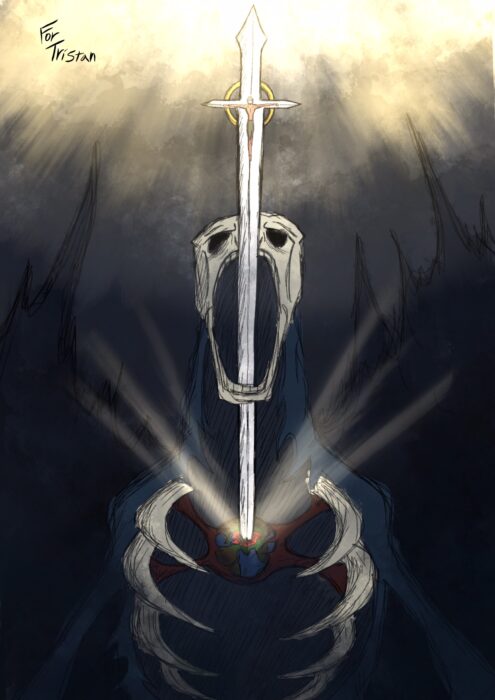“I saw the Lord sitting upon a throne, high and lifted up; and the train of His robe filled the temple. Above Him stood the seraphim. Each had six wings: with two he covered his face, and with two he covered his feet, and with two he flew. And one called to another and said: “Holy, Holy, Holy, is the LORD of hosts; the whole earth is full of His glory!”
– Isaiah 6:1-3
“High and lifted up.” This is a phrase that has come to be associated with God in His glory on His throne, exalted above all other authorities and powers. And for good reason! The vision found in Isaiah 6 – with its heaven-shaking seraphim, towering throne, and thrice holy vision of God – is one of scripture’s most vivid pictures of the glory of the Lord. However, the phrase “high and lifted up” occurs at two other points in Isaiah’s book. And in the other two usages, we see a startlingly contrast with suffering and lowliness, notice:
“Behold, my servant shall act wisely; he shall be high and lifted up, and shall be exalted. As many were astonished at you – His appearance was so marred, beyond human semblance, and His form beyond that of the children of mankind – so shall He sprinkle many nations…”
– Isaiah 52:13-14
In this use, the prediction that YHWH’s Servant will be “high and lifted up” is followed by a staggering picture of His suffering, disfigurement, and atoning death – a theme that continues for the next 11 verses. Notice a similar pairing of glory and lowliness in the book’s third use of the phrase:
“Thus says the one who is high and lifted up, who inhabits eternity, whose name is Holy: ‘I dwell in the high and holy place, and also with him who is of a contrite and lowly spirit, to revive the spirit of the lowly, and to revive the heart of the contrite.”
– Isaiah 57:15
Again we see “high and lifted up” linked to some form of lowliness. However, Isaiah 57 adds the element of choice. In Isaiah 52 we saw a Servant who suffered for the sake of the nations, but in Isaiah 57 we see a God who chooses to dwell among the contrite (literally “crushed”) and lowly.
So what can we learn from these three passages? Much. However, I will mention just two things.
First, we see a connection between the Suffering Servant of Isaiah 52 and the Exalted YHWH of Isaiah 6 and 57. While intriguing, the fact that Isaiah labels both the Lord and the Servant as “High and Lifted Up” is not enough to establish the divinity of the Servant. However, further Biblical revelation confirms this trajectory by explicitly applying Isaiah 52 and 53 to Jesus Christ, God the Son (esp. 1 Peter 2:24-25). The one exalted on the throne (Is.6) is the one who willingly descends to dwell among the crushed and lowly (Is.57), and – in love – is Himself crushed and made low for the sake of our sins (Is.52-53).
Secondly, we see a connection between glory and lowliness, between exaltation and shame. In Isaiah 52, we read that the servant is “high and lifted up” in exaltation, but the next 11 verses are about His suffering and death. And in Isaiah 57, YHWH tells us that He is “high and lifted up” and yet chooses to dwell with the crushed. Broader biblical revelation teaches that this inclination of God to descend into the ash heap of His people’s lowliness so that He might save them is an element of His unique glory (Ps.113:5-7). There is both exaltation and condescension in the nature of God, and both are His glory.
So what does this have to do with the cross of Christ? Again, the answer is “much” – enough for books of thorough exposition – however I will examine just one verse and a few of its implications (I am indebted to Richard Bauckham and His book, God Crucified, for many of the following insights).
In John 8:28, in response to a question about who He is, Jesus replies:
“When you have lifted up the Son of Man, then you will know that I am He, and that I do nothing on my own authority, but speak just as the Father has taught me.”
There are two important things to notice about Jesus’ response. First, when He says, “I am He,” He is making an allusion to the divine name, “I AM” (the “he” is not present in the Greek, and John 8:28 is just one of many allusions to the divine name found in John’s gospel). Jesus is – in effect – saying that when He has been lifted up, then people will know that He is the “I AM,” that He is God in the flesh.
The second thing to note is the intentional use of “lifted up.” This is John’s way of pointing our minds back to the three exaltation passages in Isaiah that we’ve already examined. However when Jesus says “lifted up” here, He’s referring most immediately to His being “lifted up” from the earth on the cross in His death (this is made explicit in John 12:32-33). So, on which nuance does John intend for us to focus? When Jesus says “lifted up,” are we to take it as meaning crucifixion or exaltation? The answer is: both.
John’s gospel reveals that Isaiah’s image of the exalted Lord and the suffering Servant climax in one person, Jesus Christ. And in one even, the crucifixion. It is at the cross that Christ is “lifted up,” both in shame and in glory. Shame because He is exposed and murdered as a criminal, but glory because – in His death – He reveals the “I AM,” He makes known the identity of God as the sovereign self-giving one who keeps steadfast love for His people, forgives their sins, and yet by no means clears the guilty (Exodus 34:6-7).
So when we see Jesus “lifted up,” may we be among those who recognize Him as the “I AM” whose wounds forever shame the false gods of this world, gods that will not and cannot suffer for their worshipers. May we be among those with eyes to see the glory of God blazing in the dark skies above Golgotha, who see the beauty of the self-giving Lord in the marred face of the crucified Christ. And – rumbling beneath the jeers and mockery shouted at Calvary – may we hear the astonished seraphic voices calling to each from other around the cross, “Holy, Holy, Holy, is the LORD of hosts! The whole earth is full of His glory!”




